Grill, Baby, Grill! Unlocking the Magic of Japanese BBQ Sauce
If you’ve ever stared into the smoky abyss of a barbecue grill and whispered, “Why does my meat look like charcoal?” — don’t worry, you’re not alone. Welcome to the world of Japanese BBQ sauce recipes, where flavor meets fire in a delicate dance of umami, sweetness, and that unmistakable teriyaki shine.
In this post, we’ll break down how to make your own authentic Japanese-style barbecue sauce, explore variations, compare it with Western sauces, and sprinkle in some pro tips from seasoned chefs and backyard grillers alike. Buckle up — it’s about to get saucy!
Table of Contents
- What Is Japanese BBQ Sauce Anyway?
- Why It Works So Damn Well
- The Basic Japanese BBQ Sauce Recipe
- Pro Tips for Grilling Like a Boss
- Sauce Variations Around Japan
- Teriyaki vs Yakiniku: What’s the Real Difference?
- Meat & Veggie Pairings That Slap
- Safety First: Don’t Burn Down the Neighborhood
- Conclusion
What Is Japanese BBQ Sauce Anyway?
Contrary to its American cousin — thick, molasses-heavy, and smoke-flavored — Japanese BBQ sauce is more of a glaze than a slather. It’s all about balance:
- Soy sauce = salty backbone
- Mirin = sweetener with depth
- Sake = umami enhancer and tenderizer
- Ginger/garlic = aromatic punch
- Brown sugar or honey = caramelization magic
It’s typically applied near the end of cooking to avoid burning and give that glossy, lacquered finish. And yes, it’s basically liquid gold when grilled over juicy chicken thighs.
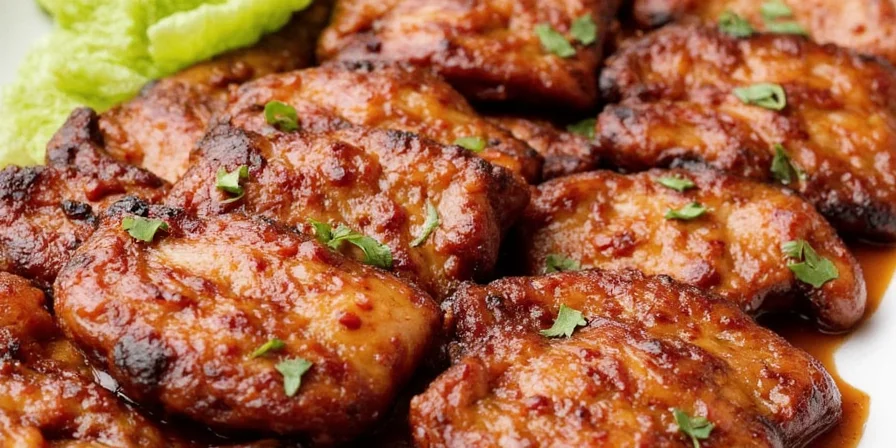
Why It Works So Damn Well
JBBQ sauce isn’t just delicious — it’s science-approved. Let’s take a quick flavor dive:
| Ingredient | Role | Science Behind It |
|---|---|---|
| Soy Sauce | Salt + Umami | High in glutamates, which activate the savory taste buds. |
| Mirin | Sweetness | Natural sugars caramelize beautifully without burning easily. |
| Sake | Tenderizer + Flavor Enhancer | Alcohol helps carry flavors into meat and evaporates during grilling. |
| Honey/Brown Sugar | Glazing Powerhouse | Aids in Maillard reaction and gives a shiny finish. |
| Ginger/Garlic | Flavor Kick | Releases volatile oils that aromatize the sauce as it cooks. |
The Basic Japanese BBQ Sauce Recipe (Perfect for Beginners)
Ready to become the backyard samurai of sauce? Here's a simple recipe that will elevate your grilling game faster than you can say “teriyaki.”
Ingredients:
- 1/4 cup soy sauce
- 2 tbsp mirin
- 1 tbsp sake
- 1 tbsp brown sugar or honey
- 1 tsp grated ginger
- 1 clove garlic, minced
Instructions:
- In a small saucepan, combine all ingredients.
- Cook over medium heat, stirring occasionally, until the sugar dissolves and the sauce begins to thicken (about 5–7 minutes).
- Let it cool slightly before brushing onto meats during the last few minutes of grilling.
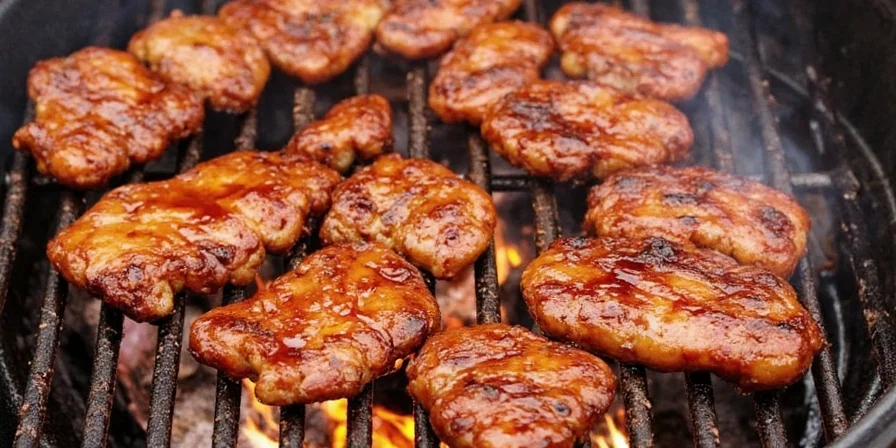
Pro Tips for Grilling Like a Boss
You didn’t come here for basic stuff, did you? Of course not. You came for those little tricks that separate amateurs from BBQ wizards. Let’s go:
- Brush, don’t drown: Too much sauce equals burnt mess. Use a light hand and apply in layers.
- Use a basting brush made for high heat: Bamboo or silicone brushes are best for even application.
- Pre-grill marinade works wonders: Marinate meat for at least 30 minutes, ideally overnight.
- Double layer flavor: Brush sauce on both sides while rotating meat frequently.
- Add sesame seeds after grilling: They toast beautifully but burn if added too early.
- Keep a spray bottle handy: If flames flare up, spritz water or beer to control them without dousing the coals.
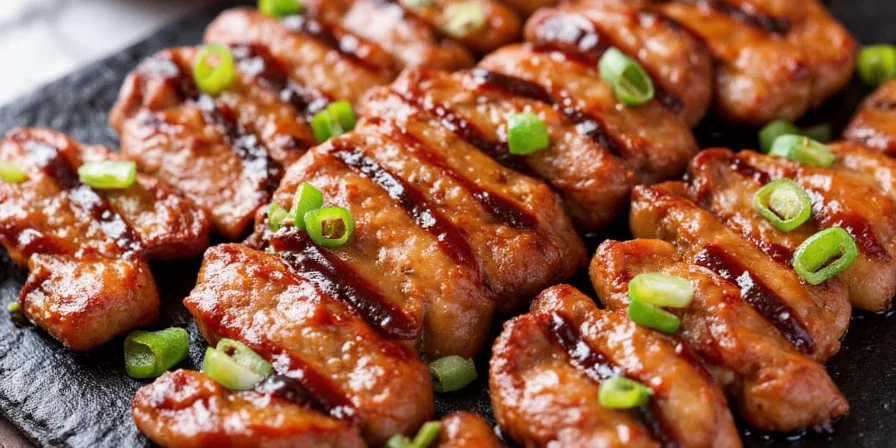
Sauce Variations Around Japan
Surprise! There’s no one-size-fits-all teriyaki. Each region in Japan has its own spin:
| Region | Style | Key Ingredients | Flavor Profile |
|---|---|---|---|
| Kansai (Osaka) | Classic Teriyaki | Soy, mirin, sugar | Rich, glossy, balanced |
| Kanto (Tokyo) | Darker, thicker | Koikuchi soy sauce, reduced longer | Saltier, deeper umami |
| Kyushu | Spicy kick | Chili paste, yuzu zest | Zesty and fiery |
| Okinawa | Island fusion | Pineapple juice, turmeric | Tropical sweetness |
| Hokkaido | Creamy twist | Butter, miso | Rich and buttery |
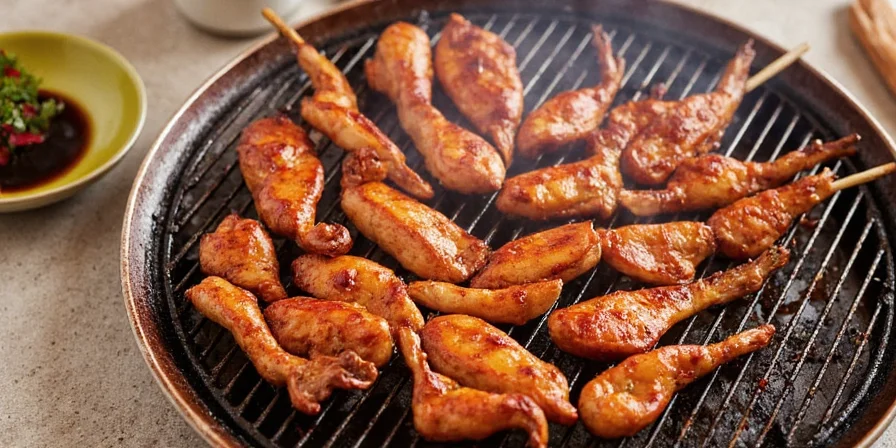
Teriyaki vs Yakiniku: What’s the Real Difference?
This is the beef versus pork of Japanese grilling debates. Let’s clear it up once and for all:
| Characteristic | Teriyaki | Yakiniku |
|---|---|---|
| Meaning | Glossy grilled meat | Grilled meat (literally) |
| Main Application | Coated/simmered before grilling | Dipped after grilling |
| Base Ingredients | Soy + sweeteners | Garlic, sesame oil, soy |
| Cooking Method | Brushed on during grilling | Marinated or dipped |
| Texture | Shiny glaze | Lighter, less sticky |
Meat & Veggie Pairings That Slap
The right protein can make or break your sauce. Here’s what goes best with Japanese BBQ sauce:
- Chicken Thighs: Juicy and perfect for absorbing the glaze.
- Beef Skewers (Kushiyaki): Thin slices on skewers cook fast and soak up flavor.
- Pork Belly: Fatty cuts love that sweet-salty hit.
- Salmon: Especially brushed with miso-infused versions.
- Vegetables: Shiitake mushrooms, eggplant, zucchini, and bell peppers sing with this sauce.
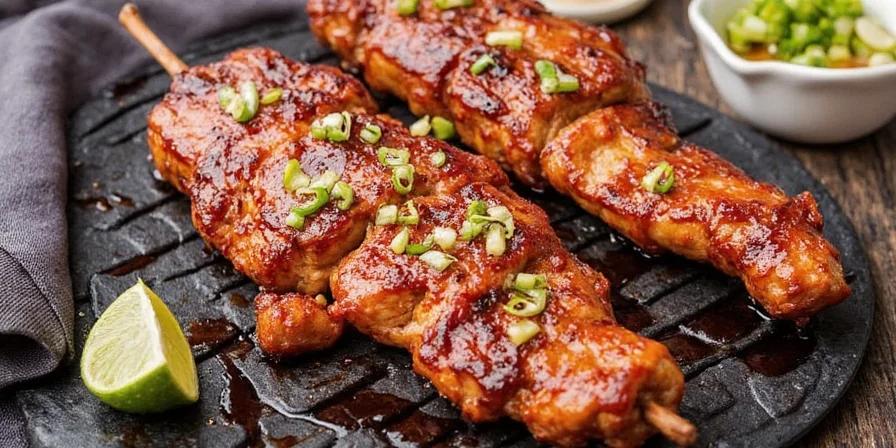
Safety First: Don’t Burn Down the Neighborhood
Here’s the thing — Japanese BBQ sauce is loaded with sugar. That means one thing: flammable flavor. Keep these safety rules in mind:
- Apply sauce late: Always wait until the meat is mostly cooked.
- Watch the flames: High sugar content causes flare-ups.
- Use indirect heat zones: Have a cooler side of the grill to move items away from direct flame.
- Keep a lid nearby: To smother any accidental mini-infernos.
- Never leave the grill unattended: Seriously. People have lost eyebrows.
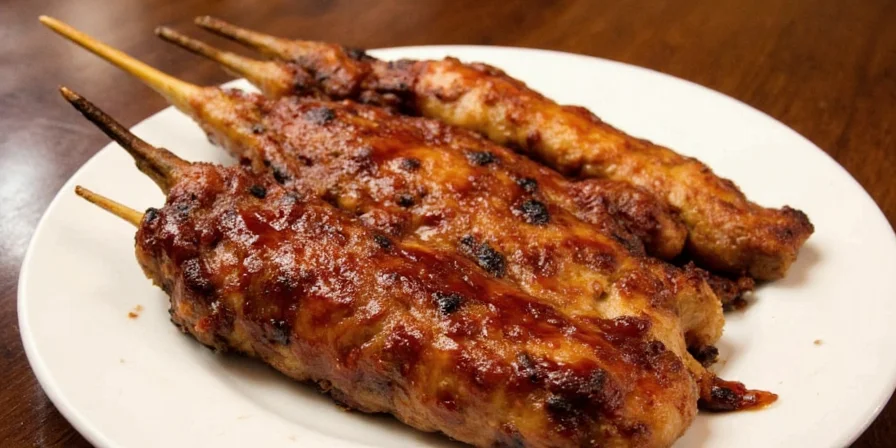
Conclusion
So there you have it — your guide to mastering the art of the Japanese BBQ sauce recipe. Whether you're grilling yakitori for a party or making dinner for two, this sauce brings big flavor without being complicated.
Remember: it’s not just about following a recipe — it’s about understanding the ingredients, balancing the flavors, and most importantly — having fun. So grab your brush, fire up the grill, and let the teriyaki tango begin.
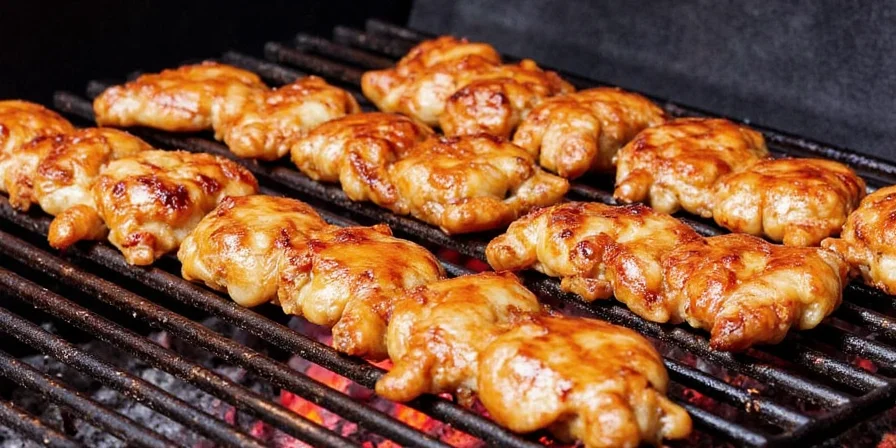

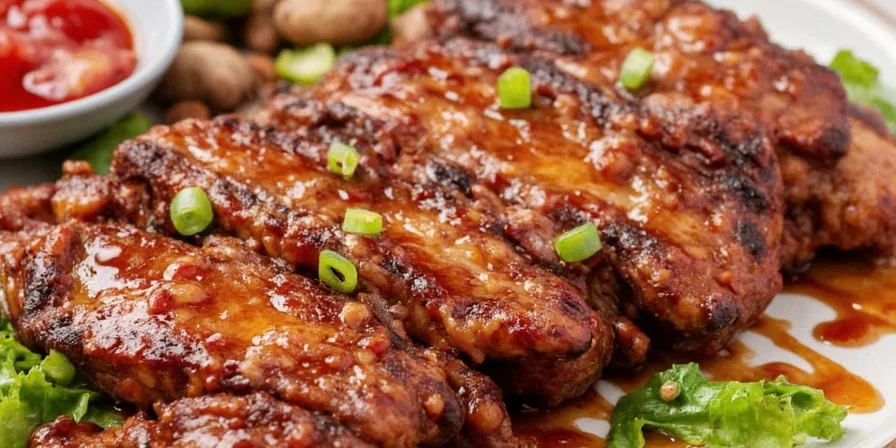









 浙公网安备
33010002000092号
浙公网安备
33010002000092号 浙B2-20120091-4
浙B2-20120091-4